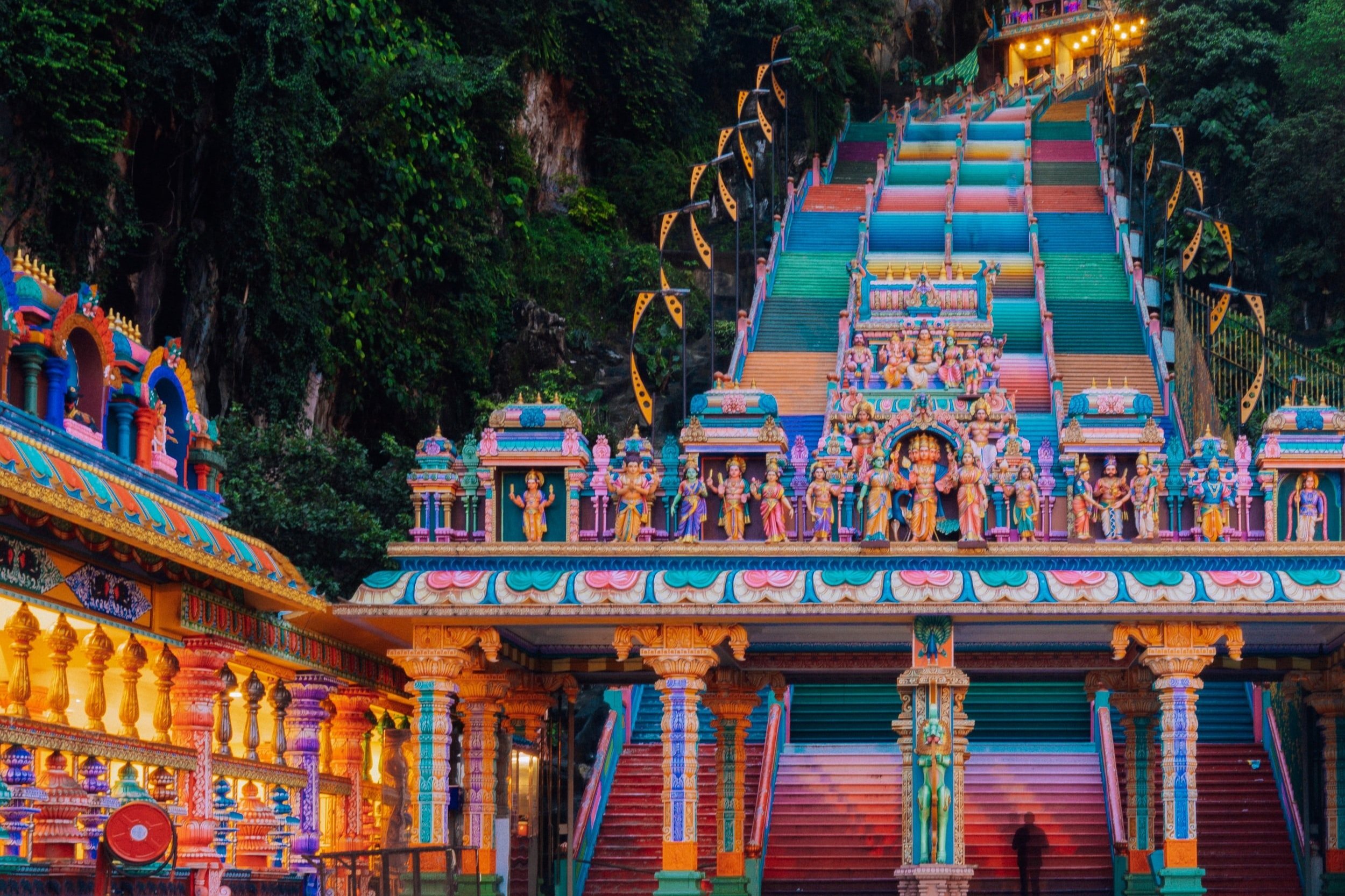Top Five Reasons to Visit the Malaysia Pavilion at Expo 2020
The Malaysia Pavilion at Expo 2020 Dubai features four showcases that highlight the country’s burgeoning agricultural sector, technological strength, culture, and tourism, all while promising net-zero emissions. As its economy recovers from COVID-19, the mega-event offers an opportunity for the country to attract tourists, investors and strategic partners to take its recent strides to new heights.
Under the theme “Energizing Sustainability,” each showcase is designed to promote Malaysia’s commitment to building a sustainable future. The pavilion's aesthetic dynamics and permanent art, cultural, and leisure elements in the “Energizing Harmony” Zone shine a spotlight on Malaysia's growing tourism sector. Alongside the cultural showcase, the “Energizing Today,” “Energizing Tomorrow,” and “Energizing Business” zones will educate visitors about Malaysia's sustainable agricultural-commodity industry, its transition to a knowledge-intensive economy, and avenues for the private sector, state enterprises, and government to explore trade and business opportunities.
Here are five reasons you should pass by during your trip to Expo 2020:
The pavilion’s interactive Rainforest Canopy design immerses guests in nature.
At the 1992 Rio Earth Summit, Malaysia pledged to keep at least 50% of its landmass covered with forest and trees to help battle global warming, but it has already surpassed the goal and is at 55.3%. The country's Expo pavilion is dedicated to this achievement and designed sustainably by offsetting carbon emitted in construction, operations, materials, and recovery. It is also the first net-zero carbon effort at Expo 2020. Meranti wood has been used extensively for the pavilion's façade to make a statement about Malaysia's sustainable forestry processes and timber goods. For a more interactive experience, the “Rainforest Canopy” has tree clusters to walk through and a river running through the center.
‘My Butterfly Effect,’ a brand campaign by the Malaysia Pavilion, inspires visitors to make little changes toward a more socially conscious and sustainable lifestyle.
American meteorologist, Edward N. Lorenz, coined the term ‘butterfly effect’ to emphasize the idea that minor causes might have major consequences. According to the theory, weather can be so sensitive to initial conditions that a butterfly flapping its wings in Brazil can trigger a tornado in Texas. The Malaysia Pavilion's 'My Butterfly Effect' campaign for Expo 2020 Dubai is a holistic idea designed to encourage and inspire individuals to think differently and achieve new results for sustainable development. Drawing on the butterfly effect theory, it promotes the idea that minor changes in an individual’s actions can lead to a significant impact on the environment. With the iconic ‘Rajah Brooke's birdwing’ Malaysia's national butterfly as the brand symbol, the campaign hopes for a green future for Malaysia and the world.
Malaysia showcases its endeavor towards sustainable agricultural-commodity in the “Energizing Today” zone.
The main goal of the country’s Expo 2020 participation is to strengthen its trade and investment ties with the UAE. Malaysian exports to the UAE have increased at an annualized rate of 5.97% over the last 24 years, primarily in jewelry, broadcasting equipment, and video displays. For Malaysia, however, the most significant trade opportunity lies in its agricultural-commodity industry, namely palm oil. The country is the world’s largest rubber glove exporter and second-largest producer and exporter of palm-based vegetable oils and fats, producing 65% and 27%, respectively. The country hopes to introduce palm oil to the Gulf region and neighboring countries. For that purpose, an entire section of the Malaysia Pavilion’s ‘Energising Today’ zone is dedicated to educating visitors about the country’s role in leading sustainable practices in the agricultural-commodities business.
The Malaysia Pavilion's “Energizing Tomorrow” zone shows how the country envisions a systematic approach to transitioning into a knowledge-intensive economy.
Following recent criticism for alleged human rights and environmental violations in its palm oil industry, Malaysia will use Expo 2020 to emphasize its commitment to sustainability and the environment by revealing its low-carbon blueprint to introduce e-mobility and carbon emissions monitoring in the country. As a party to the Paris Agreement, Malaysia aims to reduce its greenhouse gas emissions intensity of GDP by 45% by 2030 while simultaneously continuing its zero-single-use plastics campaign launched in 2018. With the implementation of energy efficiency technology, renewable energy, low-carbon power production technologies, green buildings, and clean and efficient waste and water management, efforts are underway to nurture a low-carbon future for the country.
The “Energizing Business” zone brings together business, academic, research, and diplomatic communities throughout the duration of the Expo.
The Malaysia Pavillion aims to enhance trade and connectivity by bringing together 22 government agencies, 40 organizations, and 200 Malaysian delegates. The first group of Malaysian delegates took part in the 'Commerlisation - from lab to international' thematic week. Various Malaysian innovators in ICT, Biotechnology, AI, Healthcare, and Advanced Engineering took part, offering their perspectives on the latest R&D advances and their plans for commercialization. Malaysia will conduct thematic trade and business cluster programs over 26 weeks to connect and match businesses, organizations, and governments.
Malaysia is shifting its narrative to become known as a technologically advanced and environmentally conscious nation, and Expo 2020 will play a critical role in this. Its ambition to promote homegrown businesses and highlight its sustainable initiatives at Expo 2020 will pave the way for the country's economic recovery.
Naam Chakravorty is a Gulf Region Analyst at Botho Emerging Markets Group.
For more information, contact Naam here.

